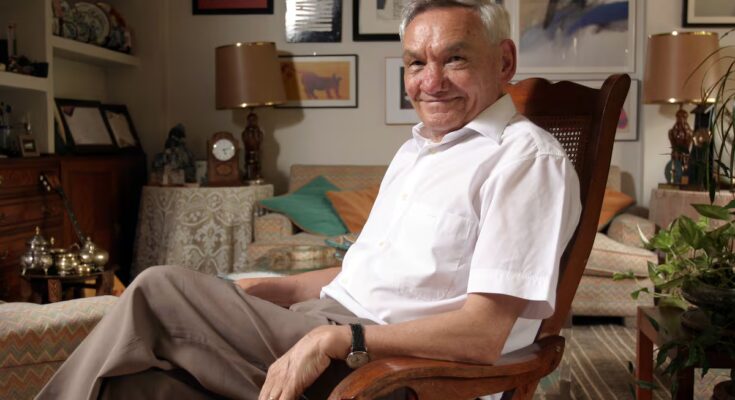He was born in 1934, in Noceda, province of León, near Puente de Domingo Flórez, Murias and Ponferrada, towns where he has a street dedicated to him. He entered the School of Aeronautical Engineering and obtained a scholarship from the National Institute of Aeronautical Technology which marked his first years as a researcher under the guidance of Gregorio Millán. The imprint left by a series of lectures on supersonic aerodynamics given by von Kárman in 1948, as well as Millán’s 1957 lectures on supersonic aerodynamics Aerothermochemistrythey were decisive inspirations at the beginning of his fruitful career. In 1962 he received a scholarship to the California Institute of Technology, where he worked with Frank Marble. A group of mathematicians from that university had developed the method of singular asymptotic perturbations, which they applied to fluid dynamics problems. Liñán transplanted the technique into aerothermochemistry.
In 1966 he obtained the Chair of Fluid Mechanics at the Higher Technical School of Aeronautical Engineers in Madrid, where he carried out, for more than 40 years, intense teaching and scientific work, with constant visits to various North American and European universities. He conducted research contracts with many US organizations, attracted international meetings, promoted numerous European and Spanish projects, and supported the creation of research institutes in various Spanish universities.
The first doctoral theses he directed date back to 1977, the last, at the age of 81, in 2015. Liñán was the founder of a Spanish school of fluid mechanics, applied mathematics and combustion. The teachers and researchers of his school have held, and hold, prominent positions in important centers in Spain and around the world, in fields such as Fluid Mechanics, Combustion, Bioengineering, the Environment, Aeronautics and Space.
Liñán was a world expert in fluid mechanics with chemical reactions and combustion processes. He extracted rich information from the mathematical equations governing convection-diffusion-reaction processes for use, for example, in designing gas turbines to generate electricity or propel airplanes, or in predicting the spread of fires. From the powerful scientific source illuminated by Amable flow profound analyzes of the asymptotic structure of diffusion, ignition, extinction and triple flame. Together with Zeldovich, in Russia, Liñán can be considered the best theoretician of the 20th century in the field of combustion. He combined profound mathematical knowledge and wonderful physical intuition, complemented by an overflowing imagination. Solid scientific knowledge was, in his view, the creative basis to which the imagination can give wings, although “imagination,” he said, “can never come before knowledge.”
Liñán has been the subject of numerous awards. He was a member of the Royal Academies of Sciences (since 1991) and of Engineering of Spain (1994), foreign correspondent of the Academies of Sciences of France, of Mexico and of the National Academy of Engineering of the United States. He has received numerous awards, including the Prince of Asturias Prize for Scientific Research (1993) and the Zeldovich Medal (1994), the highest international recognition in the field of combustion. On October 30, the Cervantes Institute paid homage to him by depositing some of his works in one of the famous letterboxes.
He was appointed doctor honor cause from the Carlos III University of Madrid (1994), of Zaragoza (1999), Polytechnic of Catalonia (in 2004), Polytechnic of Valencia (in 2005), a city to which it also has a dedicated street, Santiago de Compostela (2014) and Complutense of Madrid (2025). He obtained the Castilla y León Prize for scientific and technical research in 1995 and the Miguel Catalán Research Prize of the Community of Madrid in 2007.
Liñán enriched us with his wisdom. He was a giant of science on whose shoulders several generations of teachers and researchers around the world were able to reveal some of nature’s secrets. Liñán singularly disturbed and dissected flames that continue, and will continue, to illuminate humanity for a long time. His example will always be a stimulus to improve ourselves, in knowledge and values.
Jesus Ildefonso Diaz He is a member of the Royal Academy of Sciences; Cesare DopazoRoyal Academy of Engineering; AND Javier Jimenez Sendinfrom the Royal Academy of Sciences and the Royal Academy of Engineering.


